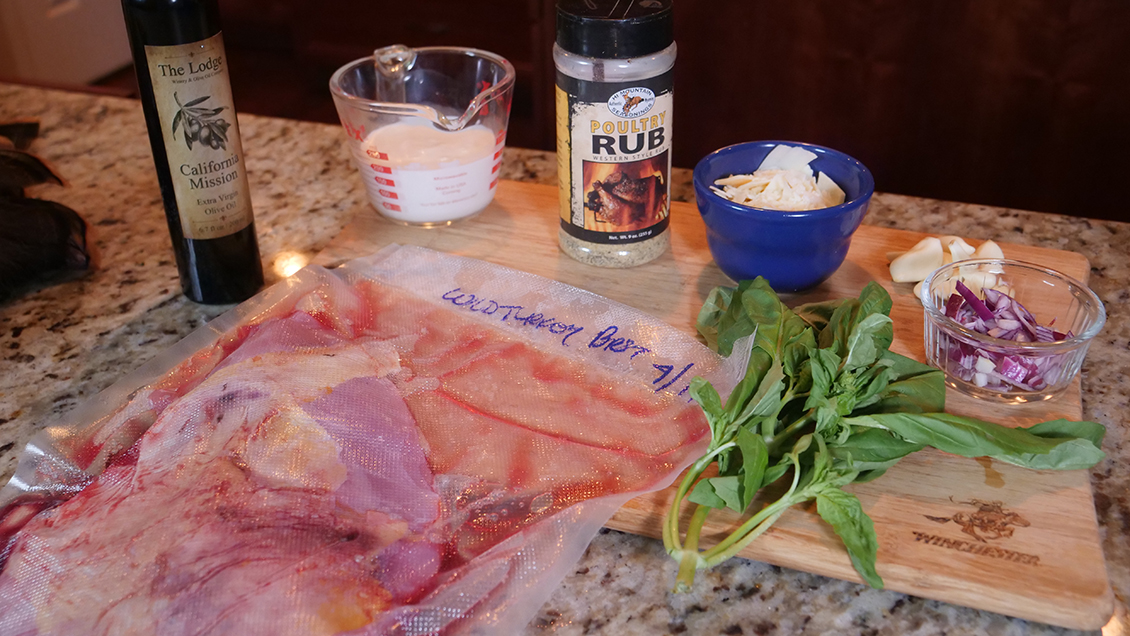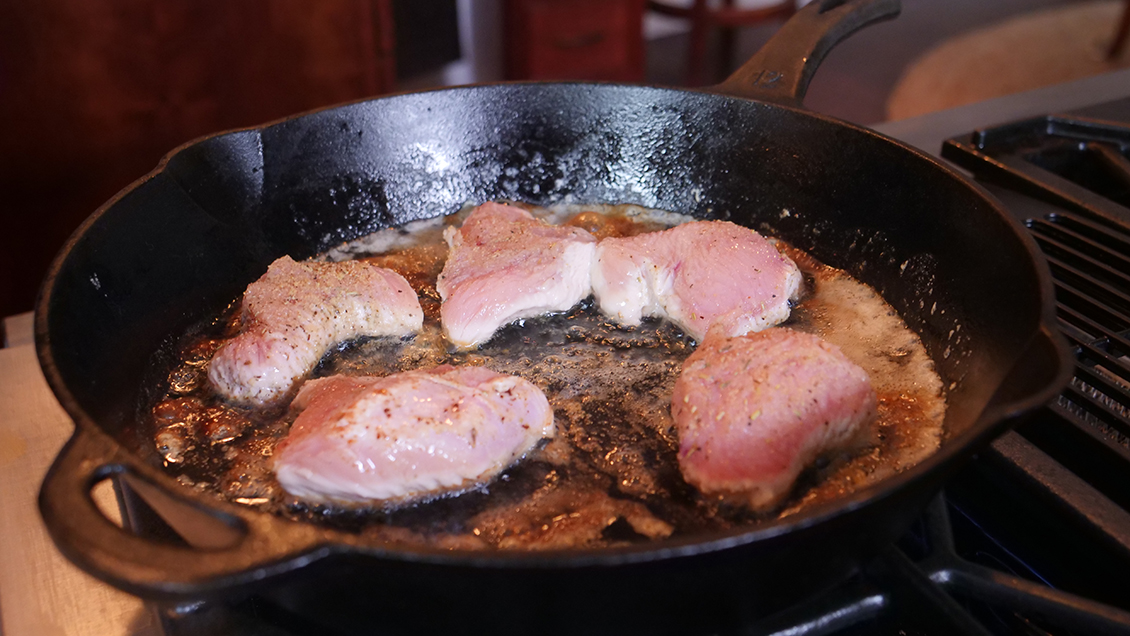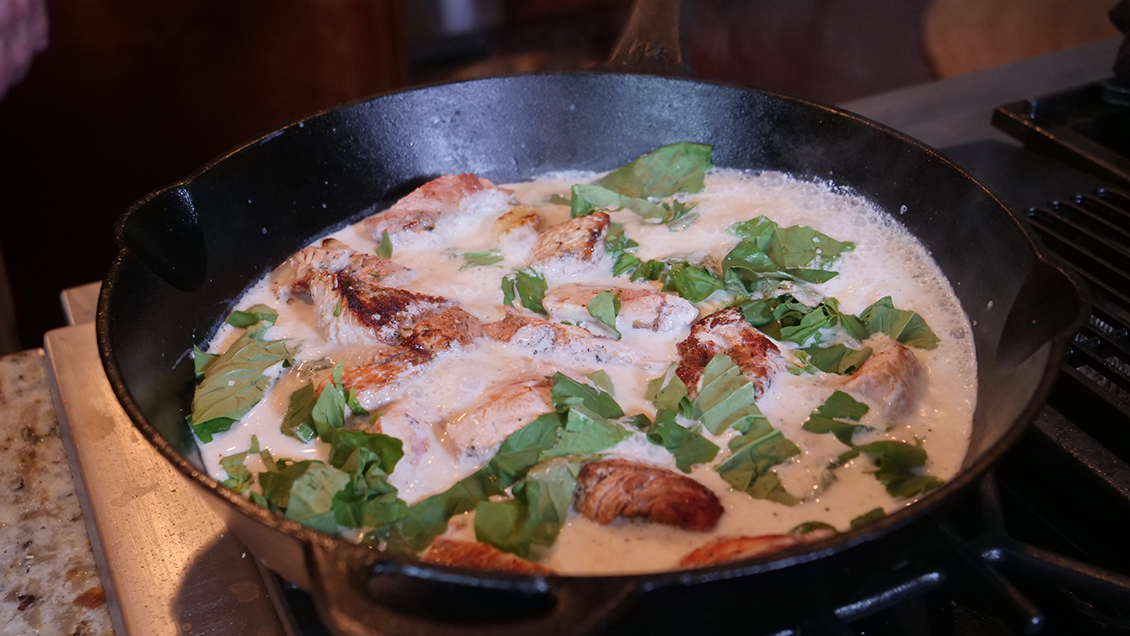How to Make Moist & Juicy Wild Turkey
Contrary to what some folks might think, wild turkey is not dry unless it’s been cooked too long.
Oh sure, you can chunk it up and throw it in a Crock Pot with a can of creamed soup and, by the time you get home from work, you’ve got a moist pot of wild turkey breast that tastes just like the creamed soup. Maybe you added some carrots, celery and onions to make it something special. To me, that’s a waste of a beautiful bird.Preventing cookies from being stored on your device may interfere with your ability to view video content.
You can adjust your cookie setting by clicking the button below.
I know what you’re thinking. “What’s wrong with a simple recipe that everyone goes crazy over? My friends can’t get enough of my Wild Turkey Creamy Mushroom Surprise.” The problem I have is that most canned creamed soups are super-salty and contain only a hint of cream or milk. I’m not knocking a creamy sauce loaded with mushrooms to top my tom, but I can do much better if I forego the canned goo and make it myself from scratch with real cream and fresh mushrooms.
Regarding the dryness of wild turkey breasts, there is very little fat on this wild bird so you can’t expect it to act like plump domestic turkey or chicken when cooked. If you just slap it on a grill and cook it to 180 degrees or more, it’s going to be dry. If, on the other hand, you first brine it in a mild saltwater solution for several hours and then soak it in a marinade of olive oil, garlic, salt and pepper for a few hours more your cooked turkey breast will be moist, flavorful and taste like wild turkey should. Not like cream of whatever soup. But you just can’t cook it so long.
There are a few other things you can do to make an old bird moist and tender, but I always start with the brine. Cooking a whole turkey breast takes a little time. The thicker the breast fillet, the lower the cooking temperature. If the skillet or grill is too hot, the meat can be dry on the outside and undercooked at the center. Use a medium heat to lightly brown both sides until the internal temperature is 150 to 160 degrees. While it’s cooking, baste with the same type of olive oil, garlic, salt and pepper marinade that you bathed it in before it hit the grill. Let it rest for a few minutes before slicing across the grain and topping with a spoonful or two of a sauce that complements, not overpowers, the meat.
Butterflying a wild turkey breast makes it easier to control how it’s cooked. Place the breast on a firm work surface and start by slicing through the outside edge with your hand pressing down lightly on the top. Work the knife between to work surface and your hand, taking extra care not to cut into your hand, until you can open it up like a book. If you happen to cut it all the way through, that’s not a big deal. The idea is to create two pieces of equal size, but half as thick as it was before butterflying. Lightly pound it so that it is of even thickness. The pounding will help to break down the connective tissues and tenderize the meat and now that it’s thinner you can more easily control the doneness. You can stuff, grill, sauté or broil it in a more manageable state that will be cooked evenly from top to bottom. Slice it thinly and quickly stir-fry with some fresh vegetables and Asian flavors. Delicious.
Many folks have discovered one of the latest home gadgets that transforms tough cuts into something spoon tender, the sous vide (pronounced “sue veed”). This process will turn the toughest old bird breast into something more reminiscent of a domestic turkey breast. Season the breast and vacuum-seal or place in a freezer-safe zipper-lock bag. Zipper-lock bags can be placed in water with the seasoned turkey breast inside, unsealed with the opening above the water line. Once the water forces most of the air out of the bag, seal as tightly as possible and clip the bag, zipper side up, to a container large enough to submerge the sous vide appliance while keeping the breasts below the water line.
Once you have the turkey breast seasoned and sealed in either a vacuum bag or zipper-lock bag, it’s time to sous vide. Sous vide appliances circulate warm water that is precisely temperature controlled. For wild turkey breast, set it at 145 degrees and let it do its thing for 3 to 4 hours while the meat, encased in the vacuum bag, bathes in its own juices while being cooked by the surrounding hot water. The process pretty much poaches the meat rather than cooking with dry heat with a grill or oven. Once done, the temperature will be exactly the same from top to bottom. One of the downsides of sous vide cooking is that meat will not have any color or bark on the outside since it never comes in contact with direct heat. For that reason, meat should be cooked 5 or 10 degrees less than the desired doneness and then seared after is has been rendered tender by the sous vide process. You can spend a couple thousand dollars for a commercial tabletop unit or around $75 to $150 for something much more portable.







